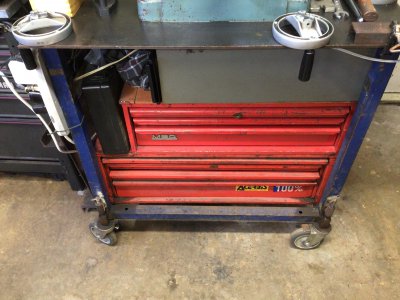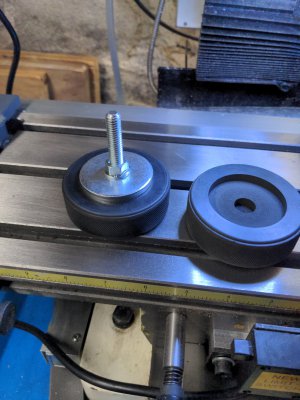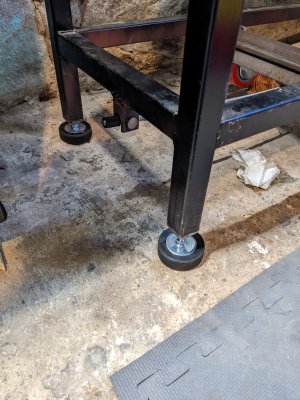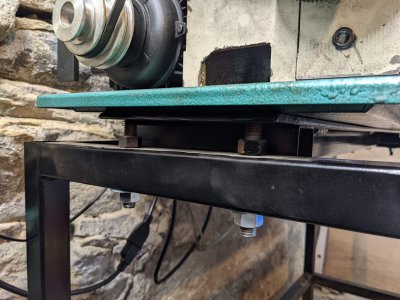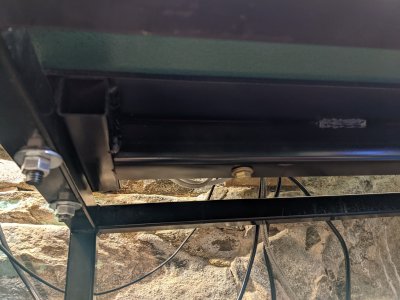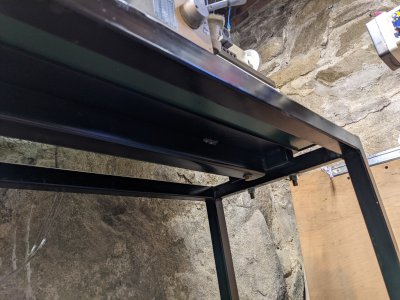- Joined
- Oct 14, 2013
- Messages
- 984
I'm voting with the 14 to 26 gauge sheet steel camp and pop rivets. 
Steel is going to be much more stiff than plywood, and the connections will also be stiff. You may want to go up to 10 gauge or 1/8"-ish on the sides if you end up wanting to attach drawers or shelves directly to it.
BTW, you wheel lowering rig is slick! Good thinking there! I assume you got it close to the balance point?
Sent from my SM-G892A using Tapatalk
Steel is going to be much more stiff than plywood, and the connections will also be stiff. You may want to go up to 10 gauge or 1/8"-ish on the sides if you end up wanting to attach drawers or shelves directly to it.
BTW, you wheel lowering rig is slick! Good thinking there! I assume you got it close to the balance point?
Sent from my SM-G892A using Tapatalk


